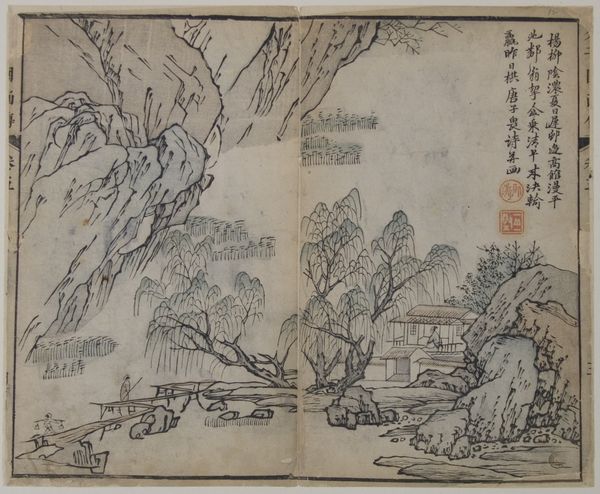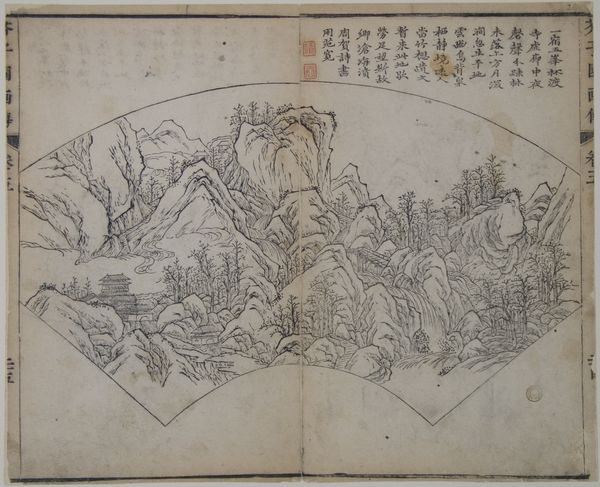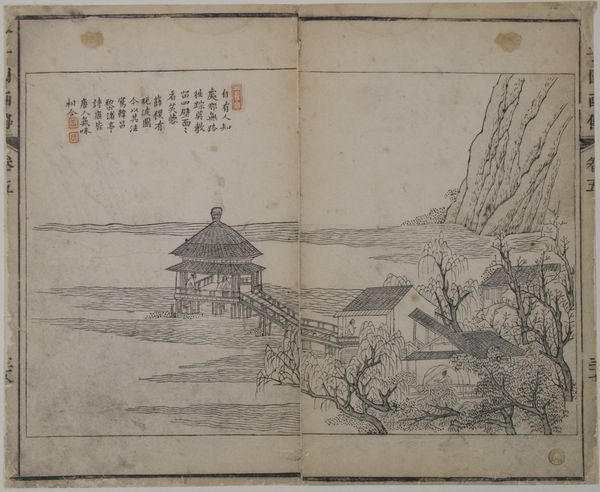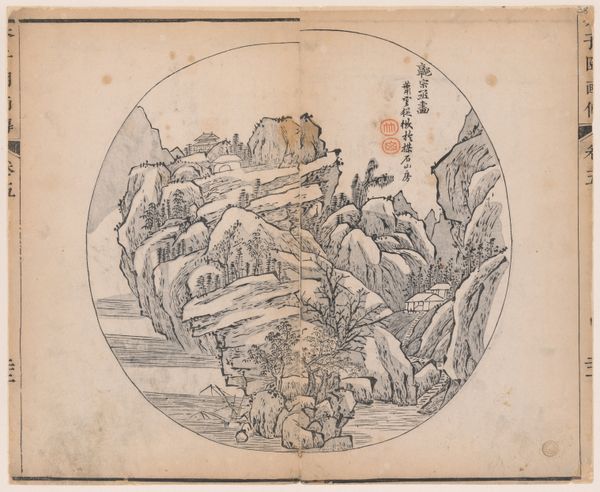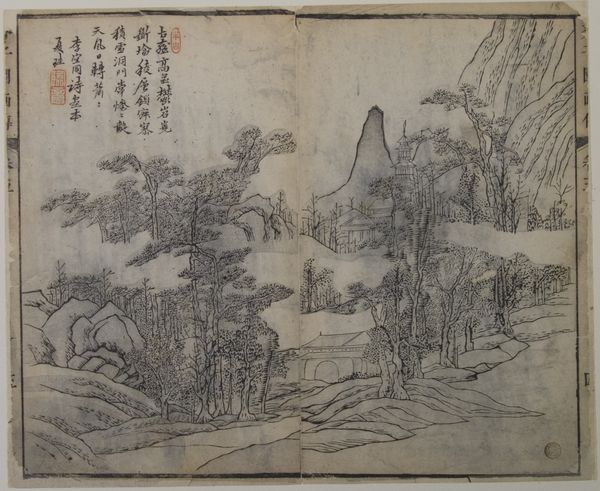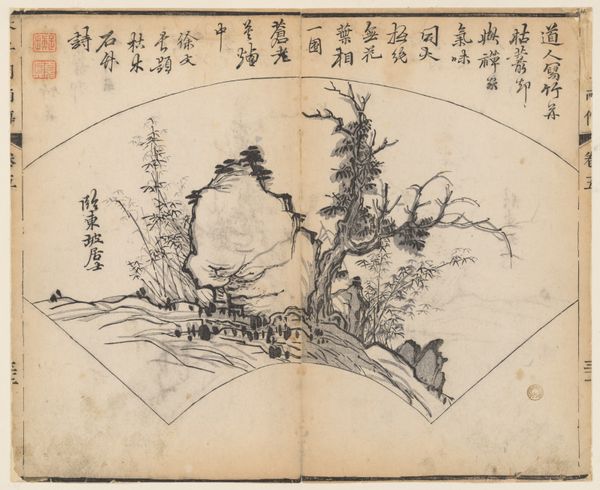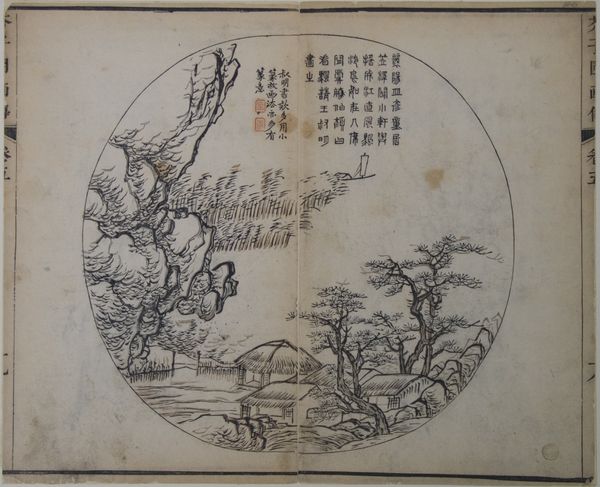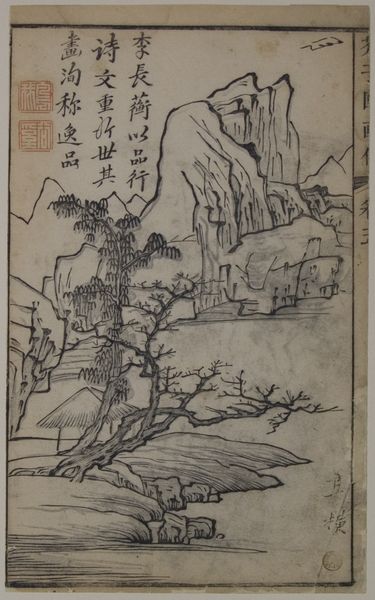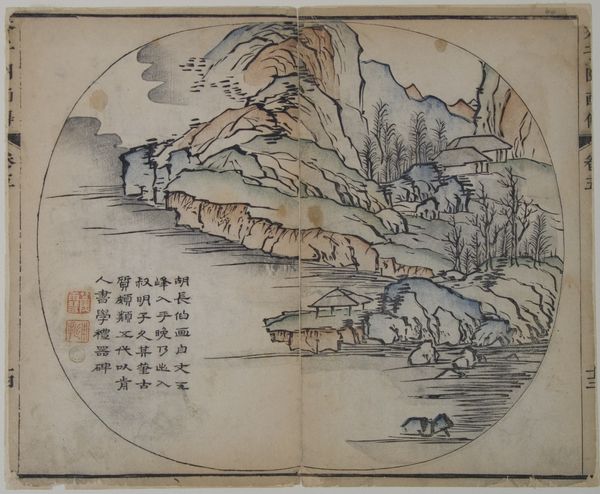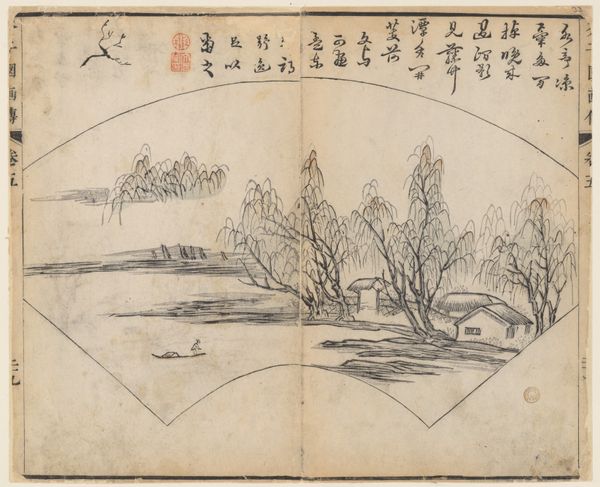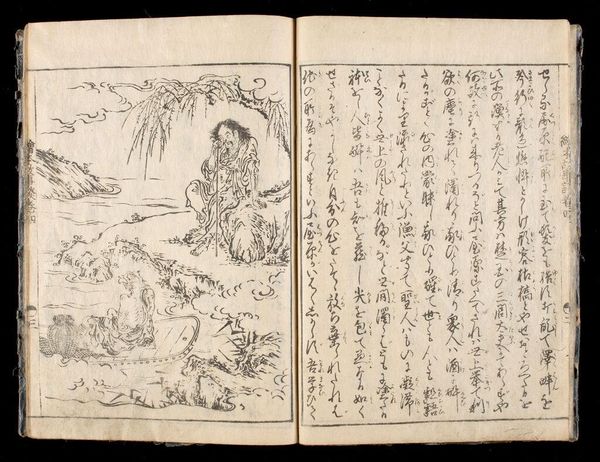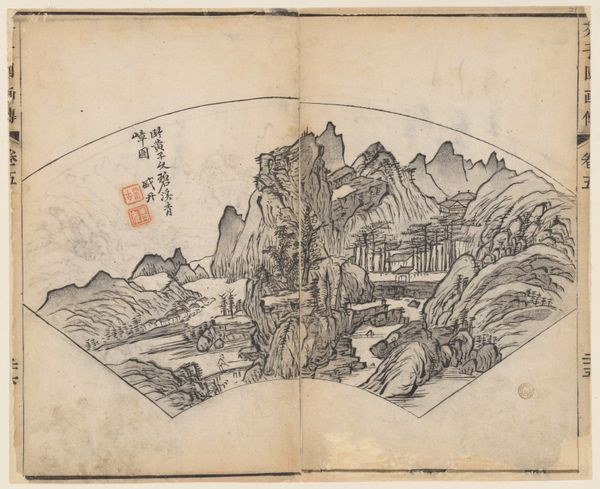
drawing, print, ink, woodcut
#
tree
#
drawing
# print
#
asian-art
#
landscape
#
house
#
personal sketchbook
#
ink
#
coloured pencil
#
mountain
#
woodcut
Dimensions: 9 5/8 x 11 13/16 in. (24.4 x 30 cm)
Copyright: Public Domain
This page from the Mustard Seed Garden Manual of Painting was made by Wang Gai around the turn of the 18th century with ink on paper. The landscape, enclosed within a circle, features towering mountains, cascading waterfalls, and delicate foliage. These are not merely scenic elements; they are symbols deeply rooted in Chinese culture. Consider the mountain: throughout history it has appeared in Chinese landscape painting, representing stability, endurance, and a connection to the heavens. Similarly, water in the form of waterfalls signifies the flow of life, renewal, and the cyclical nature of time. We can trace the significance of mountains and water back to ancient Chinese philosophy, such as in Taoism, where they are seen as essential elements of the natural world and vital for achieving harmony and balance. The presence of these enduring motifs speaks to the profound psychological need for stability and continuity, emotions that resonate across time and space. Like echoes, these symbols of mountains and water reappear, shaped by the collective memory, reminding us of humanity's enduring connection to the natural world.
Comments
No comments
Be the first to comment and join the conversation on the ultimate creative platform.

